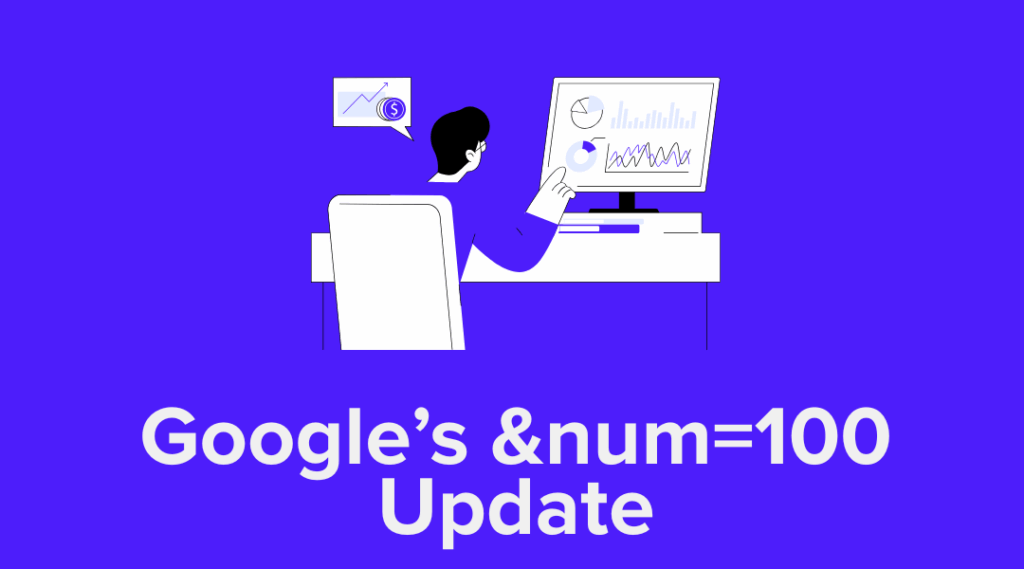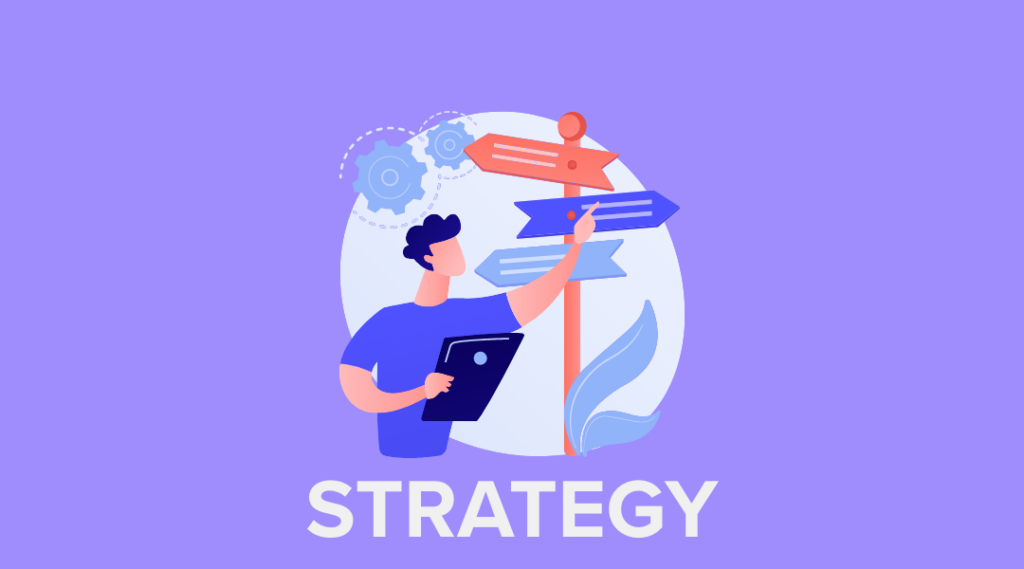When running an eCommerce business it does not take long to realize the importance of having an SEO strategy to grow organic traffic. Whether you have launched a Shopify store or are heading up a digital team for a growing brand, knowing which eCommerce SEO strategies work is crucial. In this guide, we will dive into some of the SEO strategies we use for our eCommerce clients to grow their traffic and help drive sales from organic.
What is eCommerce SEO
ECommerce SEO is optimizing your online store to help rank your pages and drive organic traffic from search engines. There is a lot to a well-planned eCommerce SEO strategy, but generally, it can fall into a few categories: keyword research, on-page optimization, content, internal and external links, and off-page SEO. When done correctly, SEO will increase traffic and help grow your business through organic traffic from search engines.
Why is SEO for eCommerce Essential
A successful eCommerce website cannot survive with traffic from just paid or social. The best eCommerce stores look for traffic from all sources, wanting to see organic driving 30-60% off the site traffic. Paid and social traffic is coming from “rented land” – as long as you keep paying for Google Ads or Social Ads, you will generate clicks; however, once you stop paying, the traffic stops. Alternatively, if Facebook or Instagram shake up the algorithm, you will have even less exposure to your audience. With a good SEO strategy, you are building your house – yes Google can tweak algorithms, but if you are doing things well, you should not see as much volatility, and you are driving traffic with keywords that can grow your business.
How to create an SEO plan for eCommerce
Like any successful marketing strategy, you need a plan, and it is no different with SEO for eCommerce. Below are some of the things you should be focusing on as you get started.
Find keywords
Your foundation block is keyword research. Like all good SEO strategies, you need to know the keywords users are searching; this enables you to optimize your pages for these keywords. Doing this will increase the odds of surfacing in the SERPs (search engine result pages). However, knowing a keyword is not enough – you need to understand the intent (informational, navigational, or transactional). You could optimize a page all day, but it will not show if the SERP intent does not match. That is why having a mix of content and commerce pages on your eCommerce site is important.
Learn more about the differences between branded and non-branded keywords.
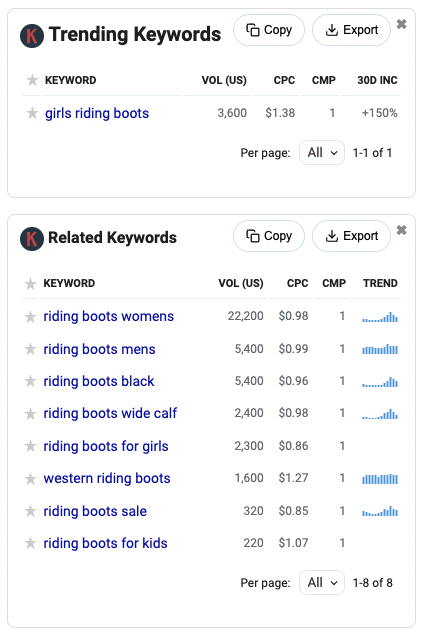
Review competitors
When researching keywords, review the SERP and look closely at the ranking pages. These are your competitors! You may have a mental list of who your “competitors” are, but the reality is your competitors are the websites/pages ranking at top spots for the keywords you want to rank.
Part of your competitor research is reverse engineering, what they’re doing, and figuring out how you can do it better. Some examples of what you want to review:
- Title and meta description: how is keyword being used, what CTAs are they perhaps using in meta description, eg: “free shipping” which can hep drive click-through.
- H1: it is likely the keyword is included, do they direct match the keyword, use a variant, or combination of keywords
- On-page copy: do they have optimized copy on the page – top and bottom, incorporated across the entirety of the page, how are your keyword(s) being used, look for LSI keywords/usage.
- Internal links: how are they linking to the page, navigation, footer, homepage, heavy linking with keyword anchors from content? Understanding internal linking will give you an idea of how important that page is and how much equity could be flowing to it. SEMRush and Moz are great tools to help understand this.
- Backlinks: another core ranking signal is the quality of external links to the site as a whole, but also to the page you are competing against. Again, SEMRush and Moz are extremely helpful for getting a feel for this. For example, if you have just created a new category page on a new domain, the odds of outranking a site like Home Depot will be a big challenge. So you look to them as a competitor and an aspirational site to help guide you in your strategy.
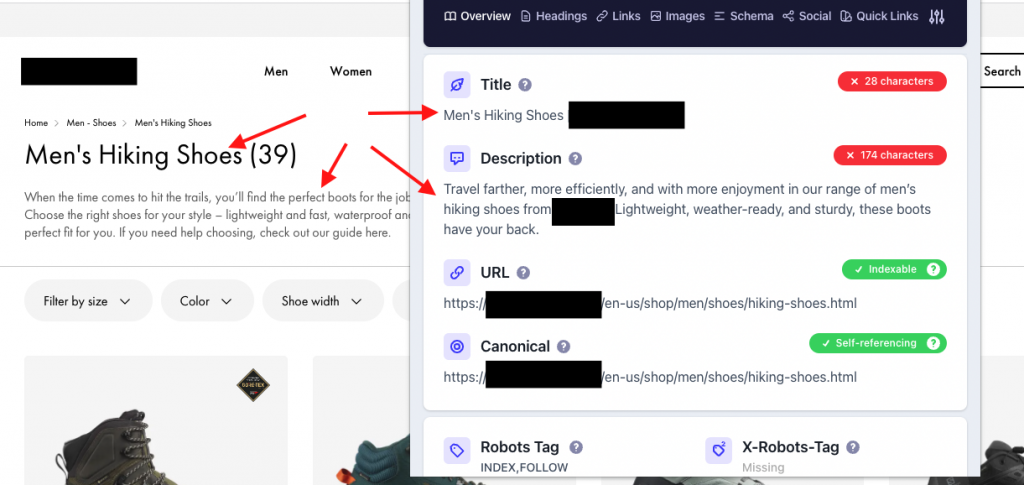
Prioritize pages
Like any marketing strategy, you need to set priorities, which is even more important if you have an extensive eCommerce site. If you have an eCommerce site with less than 50 pages, this will be easier than an eCommerce with thousands of pages. When planning an eCommerce SEO strategy, I tend to follow this order:
- Level up the homepage - Does the copy need to be dialed in? What is your big overarching keyword, is it used here? Your homepage initially will carry the most equity from external links, so you want to leverage this. What are you linking to from the homepage? Again, these pages will get a higher percentage of equity flow.
- Review your navigation - You need to be linking your most important categories from the site navigation. That is not just important for SEO but also hugely important for UX. You want users when on the site to be easily able to navigate to the categories and products they are looking for. Do you need to create dropdowns by verticals or perhaps a Men’s and Women’s drop down from the nav so you can help users find their products but also create category pages that are optimized for searches with gender added, for example, “women’s breeches”
- Focus on categories - Your categories should be evergreen, meaning unlike products, categories do not go out of stock. That is where you want to focus your time and attention. Your categories should be optimized with keywords, on-page SEO, and get priority treatment for internal links.
- Do not forget product pages - Your products will likely be lower volume, higher intent searches. For this reason, you do not want to overlook SEO for product pages, especially if you have something unique or trending in search; a well-optimized product page can cut through the SERPs. If you are a reseller you will have to get creative as many competitors will likely be using the same brand product description. By adding to this and incorporating your unique product insights regarding the product to the PDP, you can move the needle on visibility as you show uniqueness and add more value for users.
You might also like: How to Do an SEO and Improve Your Rankings
Best pages to optimize for eCommerce
Focusing your SEO efforts on category and product page optimization is a great start. As we hit on earlier, prioritization is critical for eCommerce SEO as there can be many pages; however, this is one of the things I love about eComm sites. You have so many opportunities! Below are some top-level tips for optimizing your category and product pages.
Category page SEO
When getting started with SEO for category pages, you want to focus on your on-page SEO.
- Your h1 should incorporate the keyword you are targeting
- For context at minimum, you want to have a sentence or two to the top of your category that incorporates keywords, variants of the keyword, and related terms or uses. This is helpful for the user and gives better context to Google.
- While the bottom of a category page copy can be seen as “just doing it for SEO”, the reality is that if it is done right (meaning done for the user), then it will be valuable. If you're doing it "just for SEO" then do not do it. If you are doing it to level up the page, add more value, help the user see themselves as the hero for the type of product you are selling. Then Google will use this. I have A/B tested sites with and without the bottom of category page copy – when it is there for the right reasons, it works.
- eComm CMSs will often pull your h1 tag and use that for your title in SERPs. This is fine; however, you have an opportunity to dial in your title further, perhaps adding a variant keyword or popular brand mention that is in your collection.
- I mentioned earlier that internal links are key. Your most important collections should be linked from the navigation, perhaps even from the homepage, and internally linked from blog content and other relevant pages.
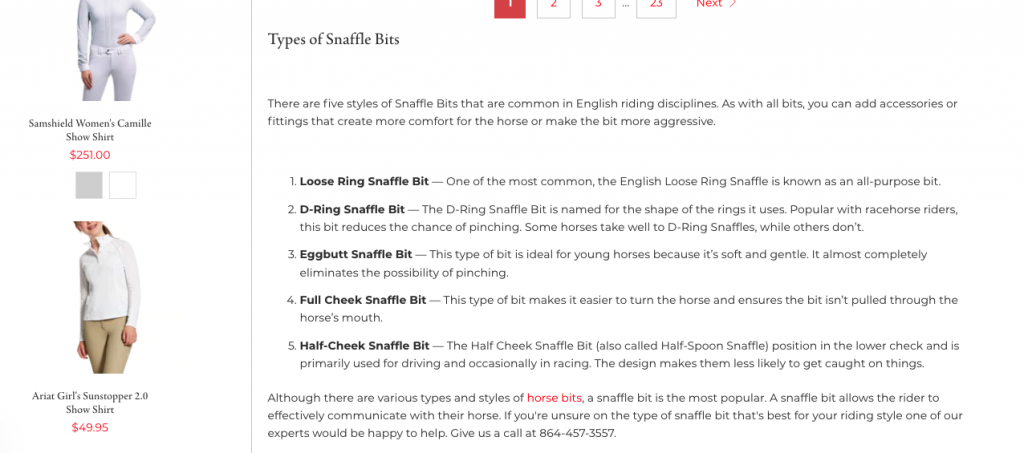
Product page SEO
When optimizing your product pages you are leaning on on-page and uniqueness. This is your bottom of funnel traffic that has researched the type of products they want, and now you want to help give them that nudge over the edge to convert on your site.
- Product title - when creating your product title you’ll want to be specific; for example, incorporate product name, color, and gender into the title.
- Product description - as noted, if you are a reseller, you are likely using the same manufacturer copy as who knows how many other sites. Be unique… yes, you can use part of what the manufacturer sent, but you want to show that your understanding of the product goes beyond a manufacturer's description. Why do you love it, what makes it unique, what are some of the benefits, what does this product do well. Add some depth and dimension to your description.
- Reviews - while you do not have control over what customers or users say about your product, you want to make sure you have your site set up to allow for reviews and make sure you pursue these via post-purchase emails. Reviews and stars add rich markup to the page. Star ratings help build trust and the reviews reinforce this. Reviews also add UGC (user-generated content) to the page, this is also rich for search engines.
- Images - similar to manufacture descriptions you want your own unique images if possible or to go alongside manufacturer-provided images. The better the quality of your images the more users will engage with your product page and the more likely you will drive conversions. You want to optimize the alt titles for images with keywords related to your product.
- Off-page SEO - outside of the elements you can control on the site, you want to look for opportunities to do off-page SEO for your products. Who is blogging and ranking for keywords around your product? Can you connect with them, seed products for review, and get linked from these articles? By doing so you will build quality links, get referral traffic, and improve the authority of your page for ranking.
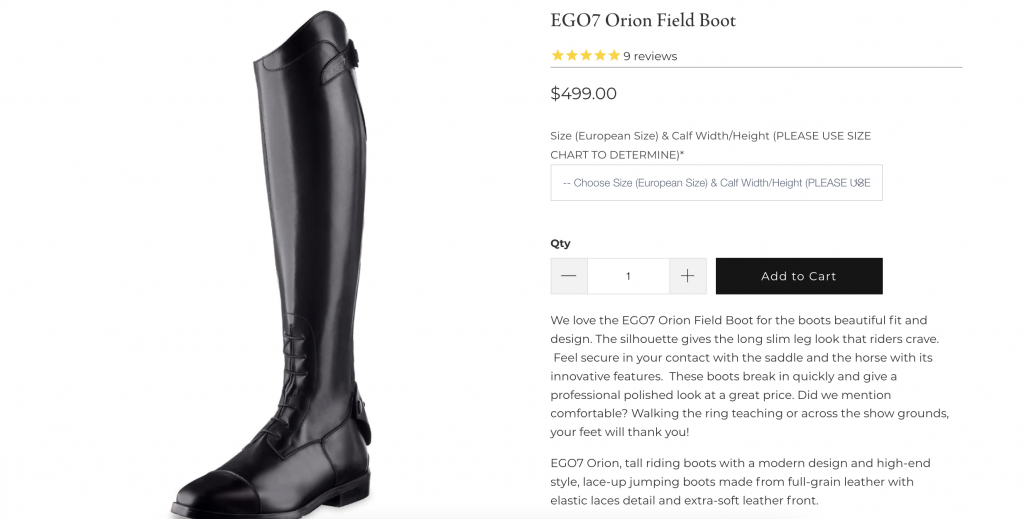
Using Content to Drive Commerce
Early we shared that knowing the intent of your keyword is key to your success for ranking. There are three main buckets for searcher intent:
- Informational - this is users starting their journey. SERPs that rank a lot of content indicates that the searcher is likely in the information-gathering stage.
- Navigational - the searcher may have a better idea now, it could be a brand or moving more down the funnel, for these SERPs you will likely find a mix of content and commerce pages.
- Transactional - this is the bottom of the funnel. Users know what they want, they have likely completed research and, are searching to buy on this keyword.
When done right, content can drive commerce. Meeting your user at each of these stages of search helps position you as an expert, which builds trust, and, later in the user journey, you become a source for the product they’re looking for.
Learn more: How Long Does SEO Take to Work? Realistic Timeline for Results
How to create a blog strategy for eCommerce
When creating content for commerce, you want to roadmap out your users’ journey. What are the questions they are asking ahead of buying, what is important to them, what concerns might they have. If you can do this well, you are going to be ahead of many.
I like to think of content falling into three categories, hygiene, hub, and hero.
- Hygiene content - what are the everyday things your potential customers could be searching for? For example, how to clean or care for a product, or how to replace or fix it. These are evergreen, lower volume type searches that could be on the run-up to a purchase.
- Hub content - we’re opening up the volume a little more but searches will be from buyers who may already know the direction they’re leaning. This could be sizing guides, in-depth product reviews, product safety, or what is X and how does it work, etc.
- Hero content - this is top-funnel content, typically drives more traffic but is still meeting users on their purchase journey. An example would be X best [type of product], list format posts drive lots of searches as users are getting started, and often these surface in navigational results, and occasionally you will even find them in transactional results. I have found that although this can be more top-funnel, I have clients that have seen a solid amount of revenue directly attributed to these posts.
Learn more: How to Create an Effective eCommerce Strategy
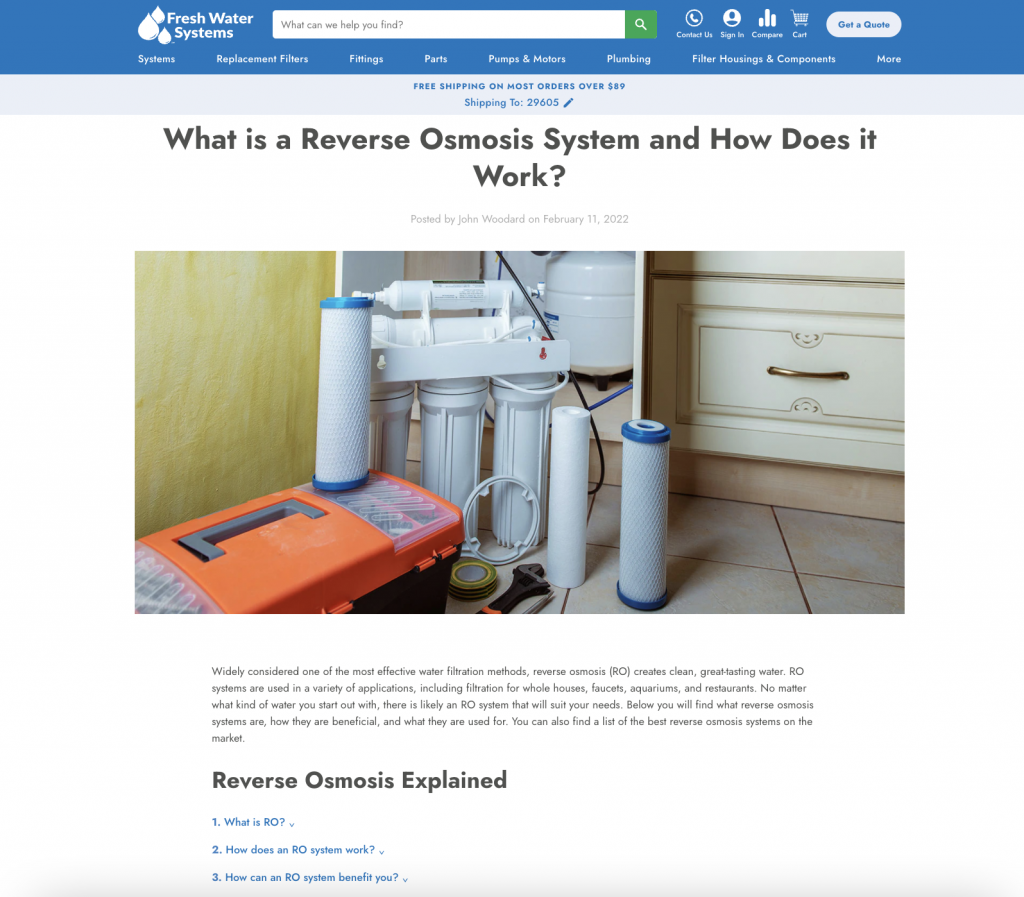
Getting Started with your eCommerce SEO strategy
That is the big thing – getting started. While it can be overwhelming it is essential to the success of your online business. You do not always want to be solely leaning on Ads as the lifeline for your business. Start with your keyword and competitor research, apply those findings to your priority pages, and work on content. Do not overlook the content, you will find it does so much more for your business than we have listed here. Beyond traffic, good content builds links, and increases authority, and this helps you rank more pages.
Need help? At tiptop, we specialize in SEO for eCommerce and have helped our clients generate millions in revenue through growing their organic traffic. If you’re interested in learning more let's talk.
You might also like:


